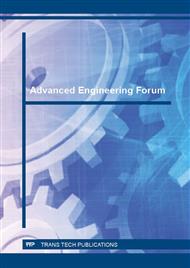[1]
G. Singh, M. Teli, A. Samanta, and R. Singh, Finite element modeling of laser-assisted machining of AISID2 tool steel, Materials and Manufacturing Processes. 28, (2013) 443-448.
DOI: 10.1080/10426914.2012.700160
Google Scholar
[2]
H. Zamini, J. Hermani, B. Sonderegger, and C. Sommitsch, Numerical and Experimental Investigation of Laser Assisted side Milling of Ti6Al4V Alloy, Material Science and Technology (MS&T) (2012).
DOI: 10.4028/www.scientific.net/kem.554-557.2054
Google Scholar
[3]
H. Zamini, J. Hermani, B. Sonderegger, and C. Sommitsch, 3D Simulation of Laser Assisted side Milling of Ti6Al4V alloy using Modified Johnson-Cook Material Model, Key Engineering Materials, Vols. 554-557 (2013) 2045-(2061).
DOI: 10.4028/www.scientific.net/kem.554-557.2054
Google Scholar
[4]
B. Shi, H. Attia, R. Vargas and S. Tavakoli, Numerical and Experimental Investigation of laser-assisted machining of Inconel 718. Machining Science and Technology. 12 (2008) 498-513.
DOI: 10.1080/10910340802523314
Google Scholar
[5]
R. Muhammad, N. Ahmed, Y. Shariff and V. Silberschmidt, Finite-Element Analysis of Forces in Drilling of Ti-Alloys at Elevated Temperature, Solid State Phenomena. Vol. 188 (2012) 250-255.
DOI: 10.4028/www.scientific.net/ssp.188.250
Google Scholar
[6]
R. Muhammad, N. Ahmed, Y. Shariff and V. Silberschmidt, Hot ultrasonic assisted turning of β-Ti alloy. Procedia CIRP 1 (2012) 336-341.
DOI: 10.1016/j.procir.2012.04.060
Google Scholar
[7]
R. Muhammad, N. Ahmed, Y. Shariff and V. Silberschmidt, Numerical Modeling of Vibration-Assisted Turning of Ti-15333, Procedia CIRP 1 (2012) 347-352.
DOI: 10.1016/j.procir.2012.04.062
Google Scholar
[8]
C. Duan, Y. Cai, Y. Li, and M. Wang, Finite element simulation of cutting temperature field during high speed machining hardened steel based on ABAQUS, Second International Conference on Intelligent Computing Technology and Automation. (2009).
DOI: 10.1109/icicta.2009.549
Google Scholar
[9]
P. Mottaghizadeh, M. Bagheri, 3D modeling of temperature by finite element in machining with experimental authorization. International Journal of Mechanical, Aerospace, Industrial, Mechatronic and Manufacturing Engineering, Vol 6, (2012).
Google Scholar
[10]
Y. R. Bhoyar, and P.D. Kamble, Finite element analysis on temperature distribution turning process using DEFORM-3D, International Journal of Research in Engineering and Technology, ISSN: 2319-1163.
DOI: 10.15623/ijret.2013.0205030
Google Scholar
[11]
A. Attanasio, E. Ceretti, A. Fiorentino, C. Cappellini, and C. Giardini, Investigation and FEM-based simulation of tool wear in turning operations with uncoated carbide tools, Wear 269 (2010) 344-350.
DOI: 10.1016/j.wear.2010.04.013
Google Scholar
[12]
DEFORM 2D version 8. 2 User's Manual, Scientific Forming Technologies Corporation Columbus, Ohio. (2008).
Google Scholar
[13]
F. Klocke, D. Lung, and S. Buchkremer, Inverse identification of the constitutive equation of Inconel 718 and AISI 1045 from FE machining simulation, Procedia CIRP 8 (2013) 212-217.
DOI: 10.1016/j.procir.2013.06.091
Google Scholar
[14]
L. Filice, F. Micari, S. Rizzuti, and D. Umbrello, Dependence of machining simulation effectiveness on material and friction modeling, Machining Science and Technology, 12 (2008) 370-389.
DOI: 10.1080/10910340802305969
Google Scholar


